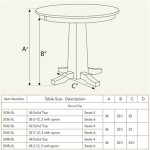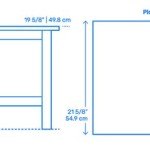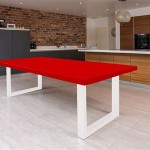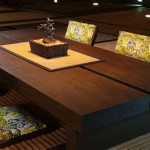Reclaimed Wood Counter Height Table: A Sustainable and Stylish Choice
The reclaimed wood counter height table represents a confluence of sustainable practices, aesthetic appeal, and functional design. These tables offer a unique blend of rustic charm and contemporary utility, making them a versatile addition to various interior spaces. Understanding the characteristics, sourcing, benefits, and maintenance requirements of reclaimed wood counter height tables is essential for making an informed purchase and ensuring years of enjoyment.
Counter height tables, typically standing between 34 and 36 inches tall, provide an intermediate height option between standard dining tables and bar-height tables. This height makes them suitable for use with counter stools, promoting a more casual and interactive dining or workspace environment. The incorporation of reclaimed wood elevates this functionality by adding a distinctive textural element and a story of repurposed materials to the design.
The term "reclaimed wood" refers to lumber that has been salvaged from old buildings, barns, factories, or other structures. Instead of being discarded, this wood is repurposed for new construction or furniture making. This process prevents deforestation, reduces landfill waste, and gives new life to materials that might otherwise be lost.
Sourcing and Characteristics of Reclaimed Wood
The origin of reclaimed wood is a critical factor influencing its appearance, durability, and overall value. Different sources offer distinct characteristics that contribute to the unique aesthetic of each reclaimed wood counter height table. Common sources include:
Old Barns and Agricultural Structures: Reclaimed wood from barns often exhibits a weathered patina, nail holes, and saw marks, reflecting its history of exposure to the elements and use in agricultural settings. Common wood species found in barn wood include oak, pine, and chestnut, each offering varying degrees of hardness and grain patterns. This type of wood is often appreciated for its rustic appearance and the stories it tells of rural history.
Deconstructed Buildings and Factories: Salvaged lumber from deconstructed buildings and factories can provide a more industrial aesthetic. This wood may include species like Douglas fir, maple, and birch, which were commonly used in construction during the industrial era. Signs of previous use, such as paint remnants, stains, and bolt holes, add to the character of the wood and contribute to its unique appeal. The density and strength of these woods make them suitable for creating durable and long-lasting table tops.
River Recovered Logs: Submerged logs that have been preserved in riverbeds for decades or even centuries can also be reclaimed. These logs often exhibit unique color variations and mineral staining due to their prolonged submersion in water. River-recovered wood can include exotic species as well as more common hardwoods, offering a diverse range of aesthetic possibilities. The process of retrieving and processing these logs is often more involved, which can influence the cost of the finished product.
Railway Sleepers: Although less common for counter height tables due to their size and weight, railway sleepers (ties) can be repurposed into furniture. These timbers are typically very dense and durable, often treated with preservatives, and exhibit a rugged, industrial appearance. Careful consideration must be given to the type of preservative used and its safety for indoor use before incorporating railway sleepers into furniture.
The specific type of wood and its source significantly influence the color, grain pattern, texture, and overall character of the reclaimed wood counter height table. These variances contribute to the uniqueness of each piece and make it a statement piece in any room.
Benefits of Choosing a Reclaimed Wood Counter Height Table
Opting for a reclaimed wood counter height table offers a multitude of benefits beyond aesthetics. These benefits span environmental, economic, and design considerations, making it a compelling choice for conscientious consumers.
Sustainability: The most significant benefit of reclaimed wood is its contribution to sustainable practices. By utilizing salvaged lumber, the demand for newly harvested timber is reduced, conserving forests and minimizing deforestation. This also reduces the energy consumption associated with logging, transporting, and processing new wood. Furthermore, repurposing wood diverts it from landfills, reducing waste and methane emissions associated with decomposition.
Unique Aesthetic: Reclaimed wood possesses a distinctive character that cannot be replicated with new lumber. The weathered patina, nail holes, saw marks, and variations in color and grain patterns create a unique aesthetic that adds warmth and personality to any space. Each reclaimed wood counter height table tells a story of its past, adding a layer of history and authenticity to the decor. This uniqueness is highly valued by those seeking to create a personalized and distinctive living environment.
Durability and Strength: Often, reclaimed wood is sourced from old-growth forests, which yielded timber that is denser and stronger than that available from contemporary tree farms. This density and strength contribute to the durability and longevity of reclaimed wood furniture. Well-maintained reclaimed wood counter height tables can withstand daily use and last for generations, making them a worthwhile investment.
Environmental Responsibility: Supporting the market for reclaimed wood encourages the preservation of old buildings and structures. By creating a demand for salvaged lumber, property owners are incentivized to deconstruct buildings carefully rather than demolish them, preserving valuable architectural elements and reducing waste. This contributes to a more circular economy and promotes responsible resource management.
Reduced Carbon Footprint: Reclaimed wood has a significantly lower carbon footprint compared to new lumber. The energy required to harvest, transport, and process new wood is considerably higher than that required to salvage, clean, and repurpose reclaimed wood. By choosing reclaimed wood, consumers can reduce their environmental impact and contribute to a more sustainable future.
Enhanced Value: Due to its unique characteristics, historical significance, and sustainable sourcing, reclaimed wood furniture often holds its value well. It is considered a desirable and sought-after material, making it a sound investment for those seeking to create a valuable and lasting piece of furniture.
Considerations for Purchasing and Maintaining Reclaimed Wood Counter Height Tables
Before purchasing a reclaimed wood counter height table, several factors should be considered to ensure that it meets your needs and expectations. Proper maintenance is also crucial for preserving its beauty and longevity.
Wood Species and Finish: The type of wood species and the type of finish applied to the table will influence its appearance, durability, and resistance to wear and tear. Different wood species have varying degrees of hardness, grain patterns, and color variations. The finish protects the wood from moisture and scratches, and it can also enhance its natural beauty. Options include oil-based finishes, water-based finishes, and varnishes. Each offering unique properties in terms of durability and appearance.
Construction Quality: The quality of construction is a critical factor in the longevity of the table. Look for solid wood construction with sturdy joints and a well-supported base. Avoid tables with flimsy construction or poorly fitted components, as these are more likely to break or become unstable over time. Examine the table carefully for any signs of warping, cracking, or other defects that could compromise its structural integrity.
Surface Texture and Treatment: Reclaimed wood can have a rough or smooth surface texture, depending on the degree of sanding and finishing applied. Consider the desired aesthetic and the intended use of the table when choosing a surface texture. If the table will be used for dining, a smoother surface may be more practical for cleaning and preventing food from getting trapped in crevices. The table should be properly treated to prevent insect infestation and ensure that it is safe for indoor use.
Moisture Content: Reclaimed wood can be susceptible to changes in moisture content, which can cause it to warp, crack, or shrink. Ensure that the wood has been properly dried and acclimatized to the indoor environment before purchasing the table. Avoid placing the table in areas with high humidity or direct sunlight, as these conditions can exacerbate moisture-related issues.
Cleaning and Maintenance: Regular cleaning and maintenance are essential for preserving the beauty and longevity of a reclaimed wood counter height table. Dust the table regularly with a soft cloth to remove dirt and debris. Clean spills immediately with a damp cloth and mild soap. Avoid using harsh chemicals or abrasive cleaners, as these can damage the finish. Periodically apply a furniture polish or oil to nourish the wood and protect it from drying out.
Addressing Imperfections: Reclaimed wood inherently exhibits imperfections, such as nail holes, saw marks, and variations in color and grain patterns. These imperfections are part of the character of the wood and should be appreciated rather than concealed. However, if any imperfections become problematic, such as splinters or sharp edges, they can be addressed with sandpaper or wood filler.
Preventing Damage: Protect the table from scratches and dents by using coasters, placemats, and trivets. Avoid placing hot objects directly on the surface of the table, as this can damage the finish. Be careful when moving furniture around the table to prevent accidental collisions that could cause damage.
By carefully considering these factors and implementing proper maintenance practices, you can ensure that your reclaimed wood counter height table remains a beautiful and functional piece of furniture for years to come.

Buy Reclaimed Wood Dining Table With 2 5 Thick Top And Steel Legs In Your Choice Of Leg Style Color Size Finish

Buy Reclaimed Wood Farmhouse Dining Table In

Buy Handmade Counter Height Table Made Of Authentic Reclaimed Wood Bar Live Natural Edge Custom Sizes In

Buy Reclaimed Dining Table With Black Hairpins Choice Of Sizescolours In

Reclaimed Wood Table Counter Height High Top Bar Made With Woo Dining Tables

High Top Bar Table For Restaurant Counter Height Rectangle Reclaimed Wood With A Frame Legs Farmhouse Dining Masa Yemek Masası Masaları

Brooklyn Modern Rustic Reclaimed Wood Dining Table Urban Goods

6 Seater Rectangular Reclaimed Wood Vintage Restaurant Table At Rs 24000 In Jodhpur

Solid Wood Dining Tables What We Make

Reclaimed Wood Bar Top Table In Natural Kase Custom








